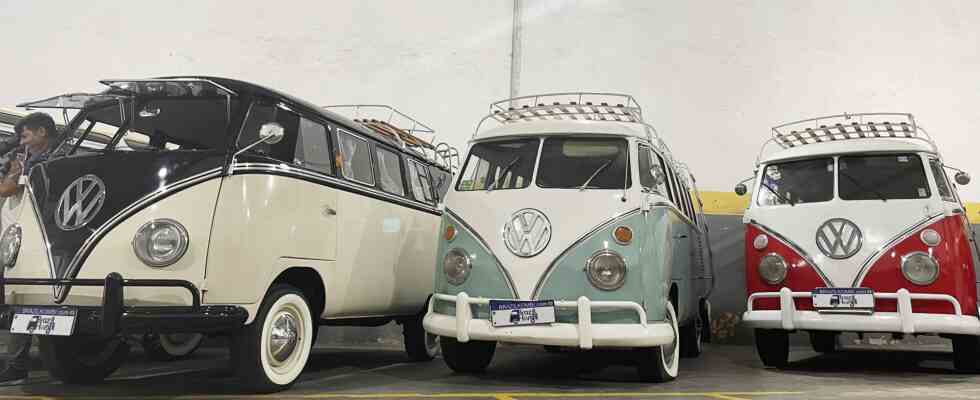Status: 04/23/2022 4:31 p.m
On April 23, 1947, a Dutchman designed the T1, the first VW bus. The old Bullis have cult status. A workshop in a suburb of Rio de Janeiro restores them for customers all over the world.
This is what she looks like, pure car nostalgia: cuddly box, googly eyes, split windshield, huge, flat steering wheel. An old VW bus. “Most associate it with memories of their childhood, their first vacation or their youth: security and freedom at the same time,” says Alexandre Ferreira Fares. “But I don’t really understand why the whole world is so crazy about this car. We have customers who have Ferraris in their garage and say: We’d rather drive the Bulli. Do more, send more .” And that’s what Alexandre does.
Time travel on four wheels
The 46-year-old Brazilian restores old VW Bullis in his workshop in a gray industrial suburb of Rio de Janeiro and delivers them to enthusiasts in 16 countries, from Australia to Lebanon. But most of them go to Germany and France. Alexandre has a good dozen real sweethearts – in green, red, turquoise, as campers with colorful curtains and folding roofs or vans with fold-out windshields and Samba side windows. Every Bulli is a journey through time on four wheels.
“We completely restore. There are no used screws on these Bullis, no old wire – everything is new. And since most of the pieces are no longer manufactured, we make everything new by hand,” says Alexandre, not without pride. “Made of antique scrap and scrap iron, which our professionals then process here. 80 percent of these cars are handmade.” Once, he reports, they made a bus in the workshop entirely in yellow and black with balloon motifs and stripes: “For a Borussia Dortmund fan. I thought it was terrible, but that’s how the customer wanted it.”
In Alexandre and Paulo’s workshop, everyone is proud of the many restored VW buses.
Image: ARD Studio Rio
The Brazilians and their “box bread”
Alexandre and his business colleague Paulo Mesquita now have 30 employees. It all started with a desperate German: He proudly bought an old Bulli in Rio, but then failed when trying to get it across the pond. After two years of swearing at Brazilian customs, one referred him to Alexandre, who was then working in export.
“Then I took the station wagon and in two weeks it was exported. The German immediately bought two more Bullis, then four more – and then I got calls from France and Italy. The business grew and fortunately it works very well .” Alexandre and Paulo find the old cars with collectors, in scrap yards or sometimes in a dilapidated barn between a herd of cows.
The legendary T1 has been produced in Brazil since the 1950s, and it was not until 2013 that Volkswagen stopped producing the VW station wagons, as the Bullis are called here. They are still in use everywhere today as delivery vans, mobile food trucks or at the weekly markets: the Brazilians affectionately call the vehicle “Little Owl”, “Omilein” or “Box Bread”.
“I Sell All”
Doesn’t he sometimes find it a pity to have to give away the Bullis, which have been so painstakingly restored? “Sure, you develop a relationship with actually every car,” says Alexandre. “My children are the ones who always say: Dad, you’re not going to give him away! But I’m selling them all. My heart is attached to another model anyway: the Fusca and the TL,” he says, pointing to a beetle (in Brazil ” called Fusca”) and a VW Type 3 hatchback. However, there have already been some export inquiries for this.
Cult station wagons for real enthusiasts – VW Bulli turns 75
Anne Herrberg, ARD Rio de Janeiro, April 22, 2022 11:37 a.m

